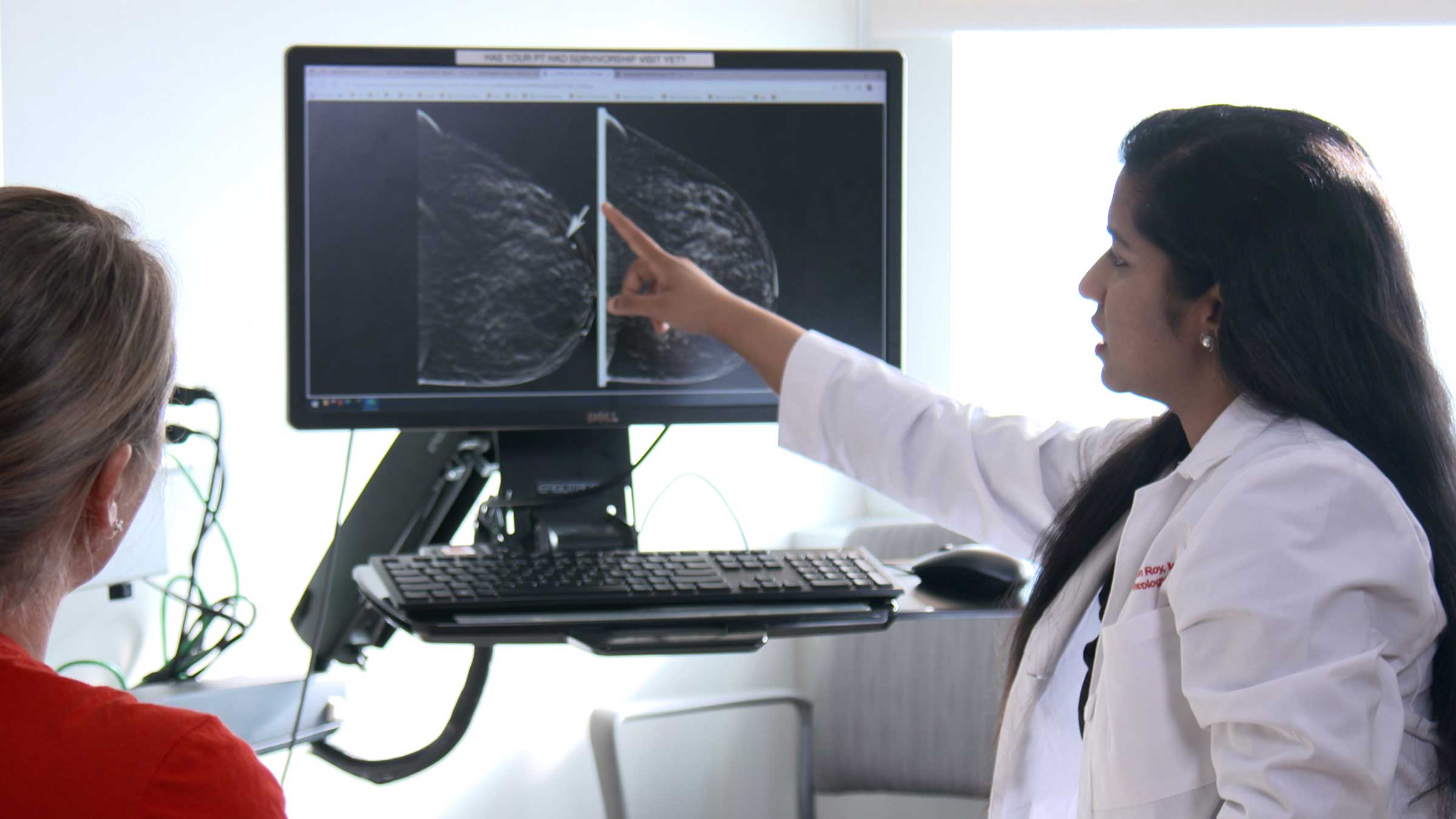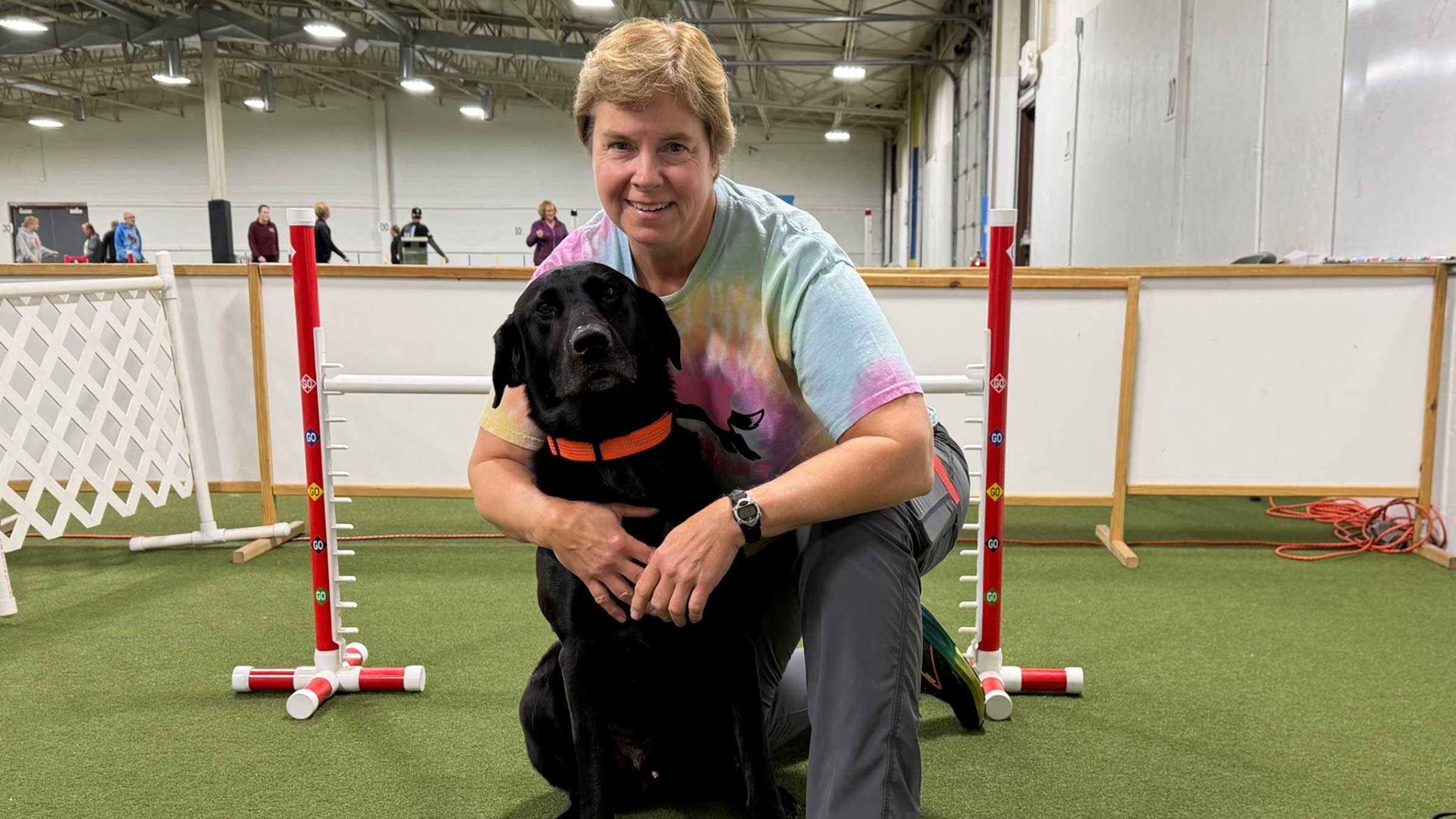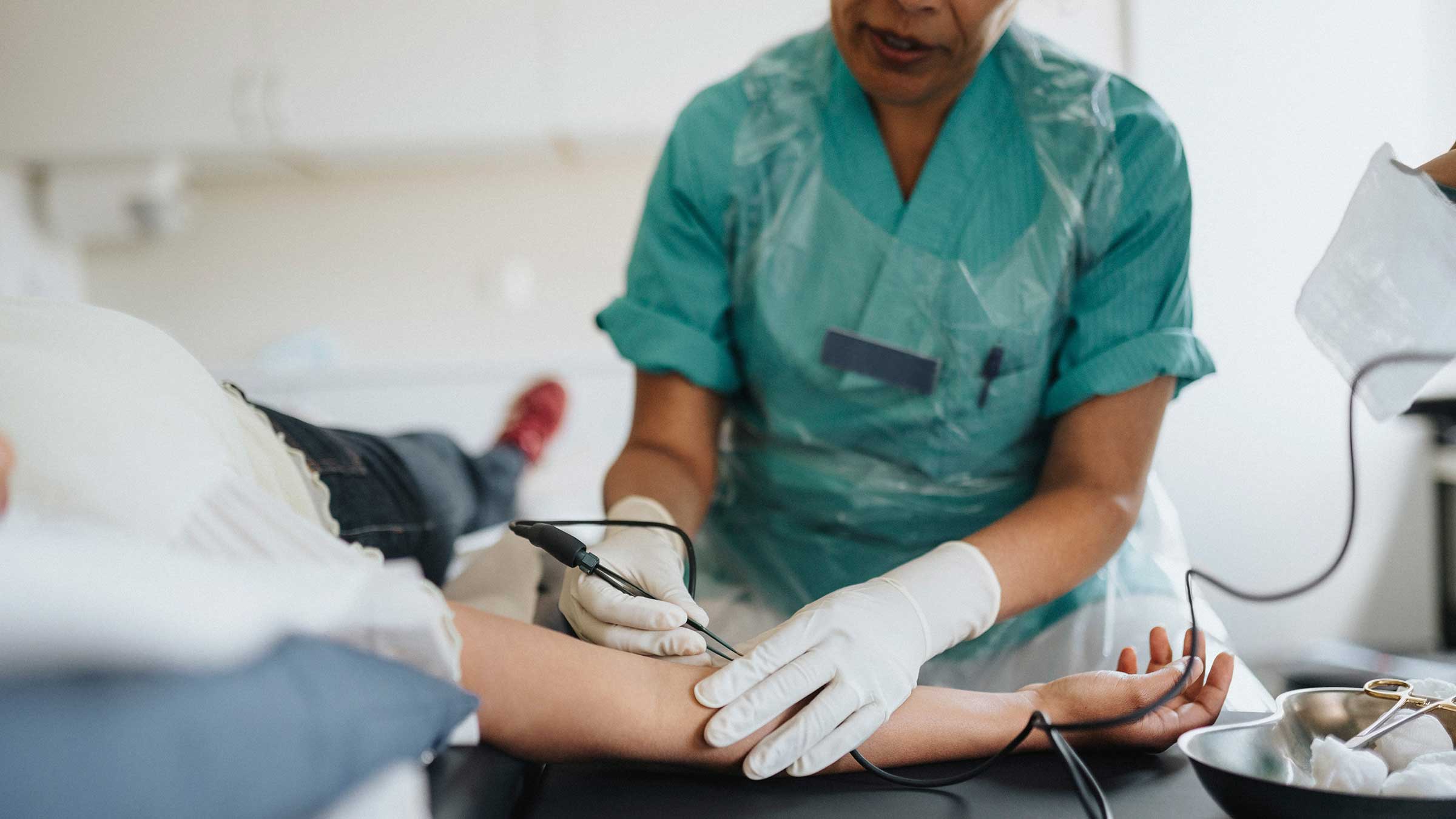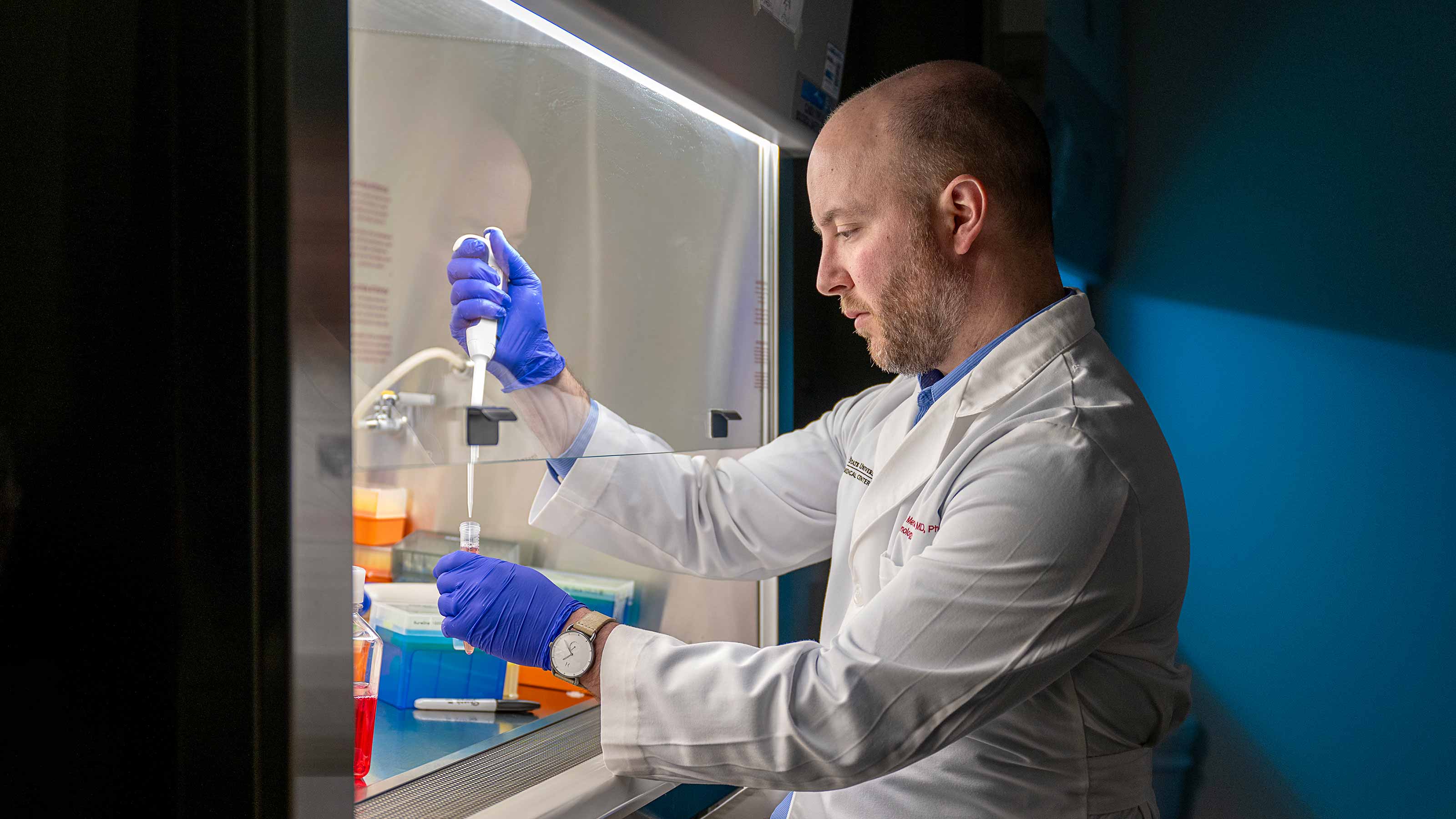How AI is helping us find lobular breast cancer earlier, giving better treatment options
Researchers say AI could help identify biomarkers, drive treatment decisions
Invasive lobular breast cancer, which represents 15% of breast cancers diagnosed in the United States, can be hard to detect. It doesn’t show up on imaging as a clump of cells, because it grows in long chains of cells; on screening mammograms, it can look like a subtle thickness.
“Lobular breast cancer tends to spread in a hidden but aggressive way and can come back many years after initial treatment,” says Arya Roy, MD, a breast medical oncologist who specializes in treating lobular cancer at The Ohio State University Comprehensive Cancer Center – Arthur G. James Cancer Hospital and Richard J. Solove Research Institute (OSUCCC – James). “When it comes back late or in patients at high risk, survival outcomes are generally worse.”
That’s why it’s important to catch lobular breast cancer as early as possible. And new research at the OSUCCC – James has devised new ways to do just that, using artificial intelligence (AI) to predict which of the people screened will develop this aggressive cancer.
Treatment options for invasive lobular carcinoma
Invasive lobular cancer is treated the same way as invasive ductal carcinoma, the more common form of breast cancer, though the different cancer forms don’t spread or respond to that treatment in the same ways.
Dr. Roy, who’s leading this new study researching AI and biomarkers for lobular breast cancer, says it’s hard to make treatment decisions because medical teams lack the tools needed to give them answers about patient risk.
“Lobular cancer has a puzzling pattern: Some patients look high-risk based on their clinical features but low-risk based on their genomics stemming from tissue-testing result,” she says.
“The genomic tests we currently use often give unclear or conflicting results for lobular cancer, which makes it harder for oncologists to decide on the best treatment. We urgently need better tools — specific to lobular cancer — that can predict which patients are truly at high risk.”
How AI is giving doctors a clearer picture of their patients’ cancer risk
In this study, scientists are using AI to look at digital images of tumor tissue along with patients’ health data. They’re hoping to identify “biomarkers” based on the images that can predict whether patients’ cancer will return. Combining these potential biomarkers with a tool that more reliably predicts risks in people with lobular cancer could help care teams detect cancer earlier and treat it more effectively.
What we know about who’s at risk for lobular breast cancer
People with dense breast tissue have a higher risk of developing breast cancer, Dr. Roy says, and that dense tissue can make it extra difficult to catch the early signs of lobular breast cancer when it’s screened via mammogram.
About 40% of women over age 40 have dense breast tissue, according to the Society for Breast Imaging.
You should talk to your primary care provider, Dr. Roy says, about your risk factors for breast cancer, including personal and family medical history and whether you have dense breast tissue. Additional imaging might be appropriate for you, depending on certain risk factors. Ultrasound and MRI testing offer different perspectives of the tissue and could help in catching cancers earlier.

Accurate, early cancer diagnosis matters
The James Cancer Diagnostic Center gives patients direct, expedited access to diagnostic testing and consultation with Ohio State cancer experts.
Schedule an appointment today









